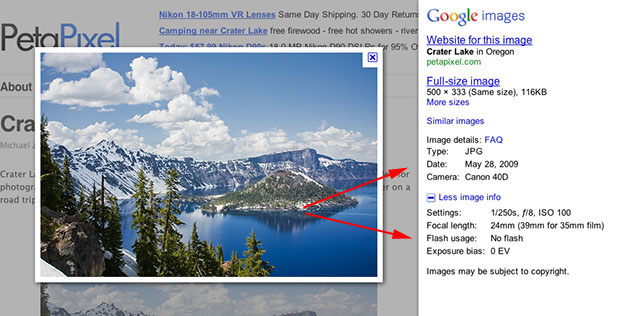Novice photographers are often interested in how to look at the parameters of a particular shot and find out which camera and lens were used when shooting it. This and other data is stored in EXIF ??(Exchangeable Image File Format). It is part of a JPEG or RAW file. It is in it that additional data (metadata) is “sewn”. EXIF allows you to save a lot of useful things: from shooting parameters to information about in which program and how the frame was edited.
NIKON D810 / 50.0 mm f / 1.4 Installations: ISO 160, F1.4, 1/400 s, 50.0 mm equiv.
The parameters that you see under each photo on the Prophotos.ru website are loaded automatically from EXIF. So, the data in this image reports that it was taken on a Nikon D810 camera ) with a universal Nikon AF-S 50mm f / 1.4G Nikkor lens. By the way, the latter is great for portraiture.
How to watch EXIF?
Today, many programs for viewing and editing photos can show EXIF: Adobe Lightroom, Adobe Photoshop, Adobe Bridge. Native for Nikon cameras, the Capture NX-D converter displays shooting parameters in great detail.
EXIF in Nikon Capture NX-D
EXIF can be seen by opening the file properties: go to the "Explorer", right-click on the photo you want, in the context menu that opens, select "Properties", and in the window that appears, click on the "Details" tab.
There are sites that allow you to upload an image and see its metadata in expanded form online. Examples of such services: http://exif.regex.info/exif.cgi ;http://metapicz.com/ . With their help, you can find information about all shooting parameters, up to what distance the lens was focused on.
There is an extension for the Google Chrome browser that allows you to view EXIF ??of any picture on the web page you open.
Through EXIF, you can find out how many pictures were taken on the camera. For example, it is useful when buying used photo equipment. Reception works with Nikon cameras. Cameras from other manufacturers do not always prescribe this parameter in EXIF, and it is necessary to extract it, resorting to additional tricks .
To get the full EXIF ??data, it’s best not to edit the frame on the PC. Upload the selected image to the site http://exif.regex.info/exif.cgi and find the column Shutter Count. Here we will see the "mileage" of the camera.
The easier to use service https://www.camerashuttercount.com/ works on the same principle .
The picture was taken on the Nikon D810 and Nikon AF-S 18-35mm f / 3.5-4.5G ED Nikkor. This compact, lightweight and affordable full-frame lens is great for capturing the landscape while traveling.
NIKON D810 / 18.0-35.0 mm f / 3.5-4.5 Settings: ISO 200, F14, 1/30 s, 24.0 mm equiv.
When creating HDR images in Adobe Lightroom, the file with the final image is assigned some shutter speed and aperture settings, although it is clear that at least two frames with different parameters were used for gluing the HDR. As a rule, the fastest shutter speed is assigned.
EXIF data can be faked
EXIF is easy to edit. There are even online services for changing shooting parameters. Therefore, EXIF ??data can act as reference, but not absolutely objective information.
NIKON D810 / 18.0-35.0 mm f / 3.5-4.5 Installations: ISO 100, F16, 1/6 s, 18.0 mm equiv.
How not to lose EXIF ??data during processing?
Sometimes it’s important to save all the data about the shooting parameters so that you and your viewers can watch them.
Some editors cut EXIF ??irrevocably (many mobile applications sin this). However, in serious post-processing programs, you can choose whether to save EXIF ??or not. For example, in Adobe Photoshop, when you save a photo through the Save As command, all data remains, and when you save through the Save For Web tool, some metadata is deleted. To avoid this, find the Metadata item in the Save For Web window and select which information to save. I usually leave all the metadata.
Adobe Lightroom has a similar situation. When exporting photos, pay attention to the Metadata item.
Now you know how to save and delete metadata. If you are afraid that the EXIF ??image data may somehow compromise you, it is enough to put Copyright Only in the corresponding menu items.
So, viewing EXIF ??data helps you analyze your own pictures and find out what parameters and which equipment other photographers shoot. All this is very useful and important in photo-making!


